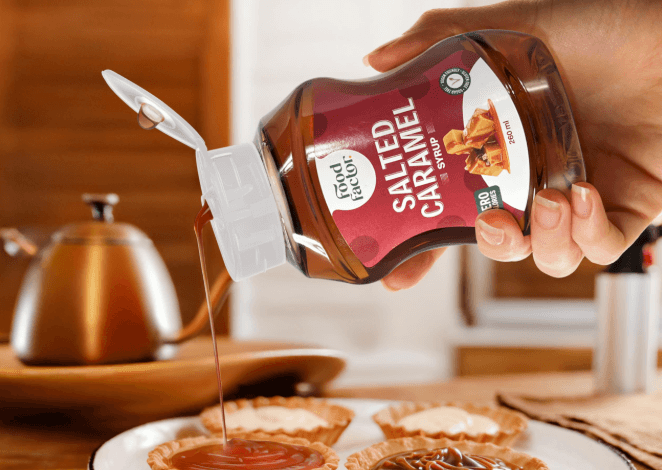Can Zero Sugar Caramel Syrup Be Used in Baking?

Zero sugar caramel syrup has become a popular way to enjoy the sweet, rich flavour of caramel without the added sugar. While it’s often used to flavour coffees and cold drinks, many home bakers wonder—can it also be used in baking? The answer is yes, but with a few important considerations to keep in mind.
What Is Zero Sugar Caramel Syrup?
Zero sugar caramel syrup is a flavoured syrup sweetened with alternatives like stevia, erythritol, monk fruit, or sucralose instead of traditional sugar. It provides caramel flavour and sweetness with minimal calories and no added sugar, making it a popular choice for those following low-sugar, keto, or diabetic-friendly diets.
How Zero Sugar Caramel Syrup Performs in Baking
In baking, zero sugar caramel syrup works best as a flavour enhancer rather than a direct sugar substitute. While it brings the caramel taste into recipes, it doesn’t caramelise or create the same texture that sugar does when exposed to heat. This means baked goods may lack the golden colour or chewy texture that sugar-based caramel provides. However, it can be a fantastic way to add flavour to cakes, brownies, muffins, and frostings.
See also: Common Health Insurance Mistakes Business Owners Make
Best Uses for Zero Sugar Caramel Syrup in Baking
There are several ways to incorporate zero sugar caramel syrup into your baked treats:
- Flavouring batters: Stir a few tablespoons into cake, muffin, or pancake batters for a subtle caramel note.
- Frostings and glazes: Mix into buttercream, cream cheese frosting, or simple glazes for added depth and sweetness.
- Drizzling: Use as a finishing drizzle over brownies, cheesecakes, or cupcakes once cooled.
- Swirling: Swirl into brownie or cheesecake batter before baking for a marbled effect.
Things to Consider When Baking with Zero Sugar Caramel Syrup
Before substituting zero sugar caramel syrup in your recipes, here are a few things to keep in mind:
- Sweetness strength: Sugar-free syrups may be sweeter or less sweet than regular sugar, depending on the sweetener blend. Adjust quantities to taste.
- Lack of caramelisation: Since it doesn’t contain sugar, the syrup won’t caramelise or contribute to browning like traditional caramel or sugar-based syrups.
- Texture impact: It adds liquid to the recipe, which might affect the moisture balance. You may need to reduce other liquids slightly.
- Flavour retention: High heat may cause some flavour loss or slight changes in taste. Adding the syrup towards the end of baking or using it in frostings can help preserve the flavour.
- Sweetener aftertaste: Depending on the ingredients, some syrups may have a mild aftertaste in baked goods. Choosing a well-balanced zero sugar caramel syrup can help avoid this issue.
Tips for Success
To get the best results when baking with zero sugar caramel syrup:
- Use it to enhance flavour rather than replace sugar for structure.
- Combine with a small amount of traditional sugar or a sugar alternative if browning or texture is needed.
- Add it to frostings, glazes, or drizzles instead of baking it directly into high-heat recipes for stronger caramel flavour.
Final Word
Zero sugar caramel syrup can absolutely be used in baking—as long as you understand its role. While it won’t replicate the caramelisation or texture of sugar, it’s a great way to introduce caramel flavour to your favourite baked goods. Try it in frostings, glazes, or as a drizzle, and enjoy a delicious caramel taste without the added sugar.






